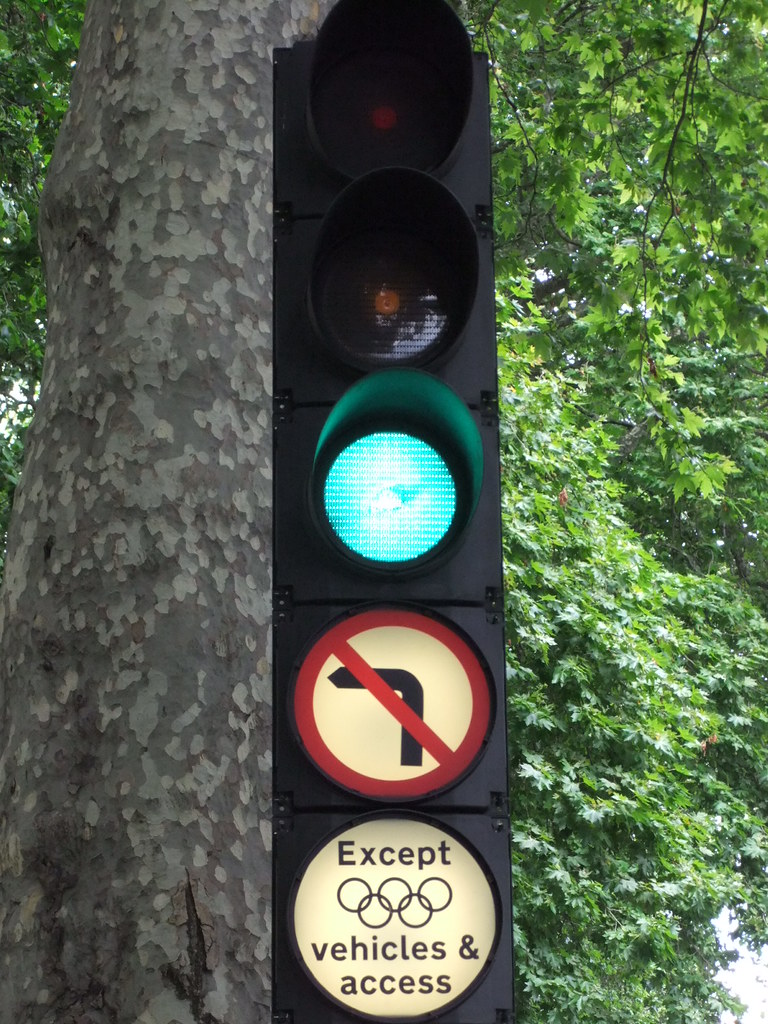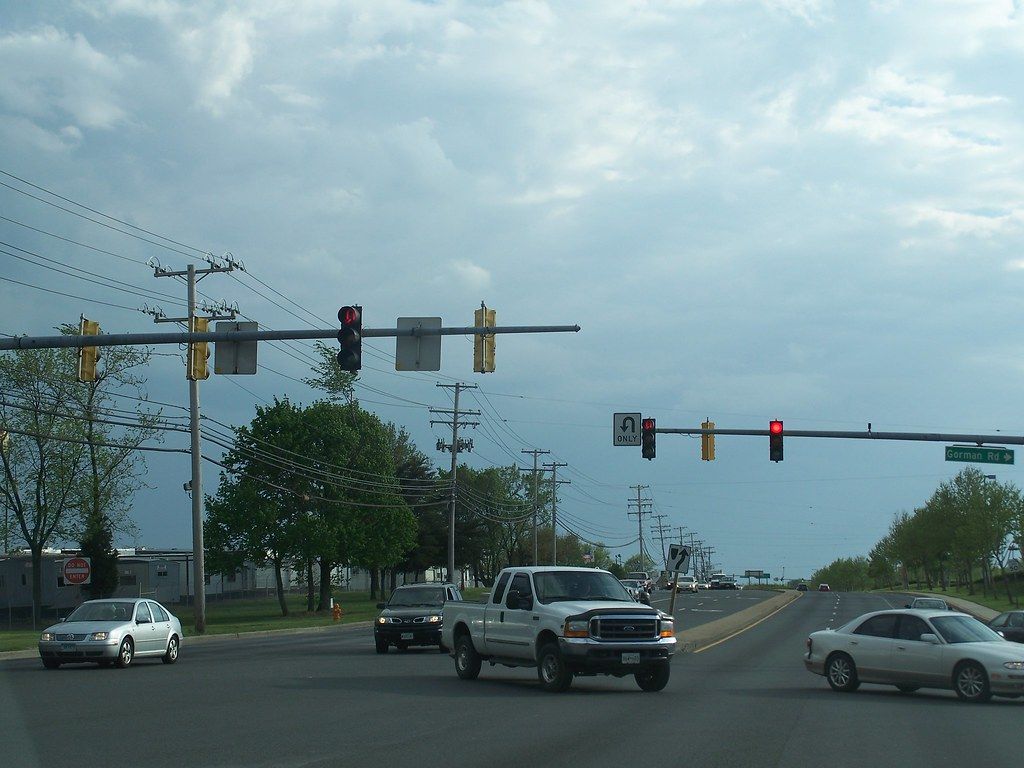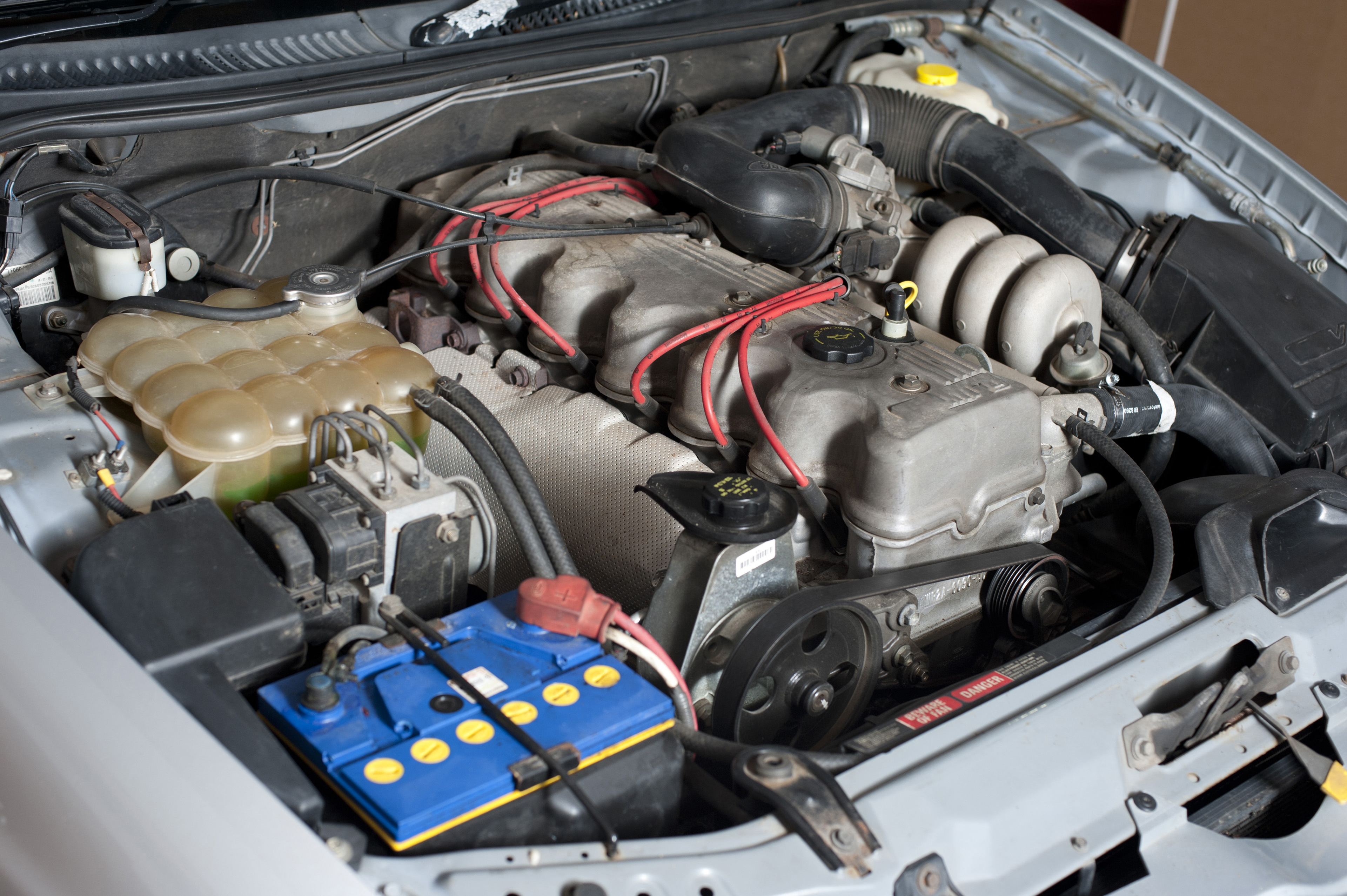
Most of us pride ourselves on being responsible, law-abiding citizens, especially when we’re behind the wheel. We conscientiously adhere to the fundamental rules of the road, believing we’re doing our part to maintain safety and order. However, the landscape of traffic regulations is far more intricate than many of us realize, a complex tapestry woven over more than a century of American driving history.
With over 120 years of traffic regulation in the US, an expansive web of laws governs our roadways, many of which have evolved, some have been overturned, and numerous remain legally binding even if their enforcement has become less strict over time. The surprising truth is that even the most diligent drivers can inadvertently become repeat offenders, accumulating risks, potential penalties, and contributing to hazardous conditions without ever intending to break the law.
This comprehensive guide is meticulously crafted to illuminate some of the most common driving laws that drivers frequently overlook, misunderstand, or simply forget. Our objective is to empower you with essential knowledge, enabling you to confidently navigate the intricacies of traffic regulations. By understanding these often-ignored rules, you can actively avoid legal troubles, steer clear of hefty fines, and most importantly, significantly enhance safety for yourself and everyone else sharing the road. Let’s delve into these critical infractions that many commit daily, often without a second thought.

1. **Not Using Your Turn Signals** It might seem like a minor oversight, but failing to use a turn signal before changing lanes or making a turn is a widespread infraction with significant repercussions. Data suggests that more than 50% of drivers in the US routinely skip this crucial step, often under the misguided assumption that their intentions are obvious or predictable to other motorists. This seemingly small act of omission, however, contributes to an alarming number of incidents, causing more than 2 million accidents per year, to be exact.
The primary purpose of a turn signal is communication. It’s the universal language of the road, allowing drivers to convey their intended movements to those around them, fostering predictability and preventing sudden, unexpected maneuvers. Without this clear signal, other drivers, pedestrians, and cyclists are left guessing, increasing the likelihood of collisions, near misses, and road rage incidents born from confusion and frustration. It disrupts the flow of traffic and compromises the safety net that well-understood driving conventions are meant to provide.
The consequences of neglecting this simple yet vital courtesy extend beyond mere inconvenience. Legally, not using turn signals is an offense in many states and can result in a traffic ticket and a fine. More critically, in the event of an accident where you failed to signal, you could be found at fault or partially at fault, leading to increased insurance rates, legal complications, and the burden of damages. It’s a habit that, once ingrained, becomes second nature, but neglecting it can have tangible and undesirable outcomes.
To cultivate safer habits, make it a conscious effort to signal every time you intend to turn or change lanes, regardless of how clear the road seems or how familiar you are with the route. This proactive approach not only keeps you compliant with traffic laws but also reinforces a fundamental principle of defensive driving: clear communication. It’s a small action that collectively contributes to a smoother, safer, and more predictable driving environment for everyone.
Read more about: Beyond Coffee: 14 Actionable Habits for All-Day Energy and Peak Productivity

2. **Rolling Through Stop Signs** The “California roll,” or simply rolling through a stop sign without coming to a complete halt, is another exceedingly common driving violation. Many drivers rationalize this practice by assuming it’s acceptable if the intersection appears quiet and free of other vehicles or pedestrians. However, the law is unequivocal: a complete stop is mandatory at every stop sign, regardless of traffic conditions. Failing to do so is a clear legal infraction and a significant safety hazard.
The dangers associated with rolling through stop signs are statistically sobering. More than 700,000 accidents every year in the US are directly caused by drivers failing to make a complete stop. A full stop allows drivers precious moments to thoroughly scan the intersection for approaching traffic, pedestrians, or cyclists, especially those who may also be failing to follow traffic laws. It provides time for crucial visual checks that a rolling stop, however slow, simply cannot afford, severely limiting your perception and reaction time.
From a legal perspective, a police officer observing a vehicle failing to come to a complete stop at a stop sign has solid grounds to issue a ticket. This can result in fines, points on your driving record, and potentially increased insurance premiums. In scenarios where an accident occurs, evidence of rolling through a stop sign will almost certainly place you at fault, exacerbating the legal and financial repercussions. Ignorance or perceived safety is not a valid defense against these consequences.
To ensure compliance and enhance safety, always bring your vehicle to a full and complete stop behind the white limit line or before entering the crosswalk. Your wheels should cease all motion, even for a brief moment. This small but critical pause allows for a comprehensive assessment of the surroundings and ensures you can proceed safely, fulfilling both the legal requirement and the fundamental principle of intersection safety.
Read more about: Gone But Not Forgotten: Unearthing the Stories Behind 14 Iconic American Cars That Drove Off into the Sunset

3. **Driving With Headphones On** While listening to music or podcasts is a common accompaniment to driving, the method of delivery can significantly impact safety and legality. Using headphones, particularly earbuds that block out ambient sound, while behind the wheel is illegal in many states, and for exceptionally good reason. This practice severely compromises a driver’s spatial awareness and hearing, both of which are indispensable senses for navigating the unpredictable environment of traffic.
The auditory cues provided by your surroundings are just as vital as visual information. The blare of a horn, the wail of an emergency vehicle siren, the distant rumble of a large truck, or the sounds of nearby construction are all critical pieces of information that help drivers react appropriately and avoid potential dangers. Headphones, by design, impede the ability to hear these external sounds, essentially creating an auditory blind spot that can be just as perilous as a visual one.
When your hearing is compromised, your reaction time can be delayed, and your ability to locate potential hazards is diminished. You might not hear a child’s warning cry, a vehicle approaching from your blind spot, or even a police siren until it’s too late. This not only puts the headphone-wearing driver at risk but also endangers passengers, other motorists, and pedestrians who rely on drivers being fully aware of their environment.
A much safer and perfectly legal alternative is to utilize your car’s built-in Bluetooth system or an AUX cable, routing audio through the vehicle’s speakers. This allows you to enjoy your audio content while still maintaining full auditory awareness of your surroundings. Prioritizing unfettered hearing while driving is a simple yet profoundly impactful step toward safer driving practices and avoiding unnecessary legal issues.
Read more about: An In-Depth Retrospective on ‘Chuck’: Exploring the Action-Comedy Spy Drama’s Enduring Legacy
4. **Not Turning On the Headlights (when required)** Regulations concerning headlight usage vary significantly from state to state, particularly during daylight hours. However, a universal mandate across most jurisdictions comes into effect when weather conditions deteriorate. Once fog descends, rain begins to fall heavily, or visibility otherwise becomes compromised, most states strictly mandate the use of headlights to drastically reduce the chances of an accident. This also frequently extends to the proper use of fog lights in exceptionally low visibility.
The function of headlights in adverse conditions goes beyond merely illuminating the road for the driver. Critically, they make your vehicle visible to other drivers, pedestrians, and cyclists. In heavy rain or fog, the silhouette of a car can easily blend into the gray backdrop, making it incredibly difficult for others to perceive its presence. Headlights, even in the middle of the afternoon, serve as a vital beacon, ensuring that your vehicle stands out and can be identified from a distance, allowing others ample time to react.
Failing to activate your headlights when conditions warrant can have serious implications. Beyond the obvious increased risk of collision due to poor visibility, law enforcement can issue citations for non-compliance. These tickets can result in fines and, depending on the jurisdiction, points on your driving record. More importantly, if an accident occurs and it is determined that inadequate lighting contributed to the incident, legal liability can shift, leading to more severe consequences.
Cultivating the habit of turning on your headlights whenever visibility is compromised, even slightly, is a hallmark of a responsible driver. This includes not only obvious conditions like heavy rain or fog but also during dusk, dawn, or when driving through tunnels. Regularly checking that your headlights, taillights, and fog lights are functioning correctly is also a preventative measure that ensures you are always prepared to be seen, regardless of the conditions.

5. **Blocking an Intersection** Few drivers intentionally block an intersection, yet it’s a remarkably common occurrence, often stemming from misjudging available space or attempting to squeeze through an amber traffic light and failing. The result is a vehicle stranded in the middle of a crossroads, creating a dangerous obstruction and impeding the flow of perpendicular traffic. This action is not only a major source of frustration for other motorists but also a significant safety hazard that leads to frequent accidents.
The statistics underscore the severity of this problem: almost half of all car accidents occur at intersections. When a vehicle blocks an intersection, it creates a cascade of problems. It prevents cross-traffic from moving when their light turns green, leading to gridlock and further delays. More critically, it can block emergency vehicles, impede pedestrian crossings, and create unpredictable maneuvers as other drivers try to navigate around the obstruction, dramatically increasing the risk of T-bone collisions.
Legally, blocking an intersection, often referred to as “blocking the box,” is an enforceable traffic violation in many municipalities. Police officers can issue citations, resulting in fines and potentially points on your driving record. The intent of the driver is often irrelevant; the act of obstructing traffic flow and creating a hazard is sufficient for a penalty. Furthermore, if your vehicle is involved in an accident while illegally blocking an intersection, you will almost certainly be held responsible for damages.
To prevent this common but dangerous infraction, drivers should always adhere to the simple rule: do not enter an intersection unless you are absolutely certain you can clear it completely before the light changes or before traffic ahead comes to a standstill. Even if your light is green, if the path ahead through the intersection is blocked, you must wait behind the white line. This patience is a vital contribution to traffic fluidity and, more importantly, to the safety of all road users.
Read more about: Objective Insights: Comparing 10 Midsize SUVs for Driver Visibility and Blind-Spot Monitoring Performance

6. **Idling an Engine (excessively)** Many drivers are unaware that leaving a car engine idling unnecessarily for prolonged periods is regulated in numerous parts of the country. Approximately 31 states, along with Washington D.C., have implemented strict regulations concerning excessive idling for no apparent reason. These laws are primarily enacted to comply with stringent emissions regulations and to foster cleaner air quality, but they also offer benefits to the driver.
The environmental impact of idling engines is substantial. When an engine idles, it continues to burn fuel and release exhaust gases, contributing to air pollution, greenhouse gas emissions, and smog, particularly in urban areas. While the individual contribution of one car might seem negligible, the cumulative effect of millions of vehicles idling daily significantly degrades air quality, affecting public health and contributing to climate change. Reducing idling is a straightforward step towards environmental responsibility.
Beyond the environmental imperative, there are tangible benefits for the driver. Turning off the engine when stationary for more than a brief period, generally 10 seconds or more, saves fuel. Modern engines are designed to be more fuel-efficient when restarted than when idling for extended times. Additionally, minimizing idling reduces unnecessary wear and tear on engine components, potentially extending the lifespan of your vehicle and reducing maintenance costs over time.
Understanding and adhering to anti-idling laws is a simple way to contribute positively to both the environment and your wallet. Fines can be imposed for violating these regulations, depending on local ordinances. Developing the habit of switching off your engine when waiting for passengers, at long traffic lights where permitted, or in queues can make a meaningful difference, aligning your driving habits with both legal requirements and sustainable practices for the community.
7. **Speeding in School Zones**While general speeding is a concern, speeding in school zones represents a particularly hazardous and frequently overlooked violation. A recent survey revealed that as many as 41% of people in the US admitted to exceeding the speed limit in these sensitive areas. This statistic is alarming, highlighting a widespread disregard for regulations specifically designed to protect the most vulnerable road users: children. The consequences of even slightly exceeding the speed limit in a school zone can be catastrophic, turning a moment of impatience into a life-altering tragedy.
School zones are characterized by significantly reduced speed limits for a critical reason: children are often unpredictable. They may dart into the street unexpectedly, be less attentive to traffic, or be difficult to see due to their smaller stature or parked cars. Lower speeds provide drivers with crucial extra seconds to react, slow down, or stop, drastically increasing the chances of avoiding an accident. Ignoring these reduced limits gambles with the lives of students, parents, and school staff who frequent these areas daily.
The penalties for speeding in a school zone are typically far more stringent than for general speeding infractions. Many jurisdictions impose double fines, additional points on a driving record, and sometimes even mandatory community service or defensive driving courses. These enhanced penalties reflect the elevated danger posed by reckless driving in areas where children are present. Moreover, in the tragic event of an accident, a driver speeding in a school zone will almost certainly face severe legal repercussions, including criminal charges in cases of serious injury or fatality.
To cultivate safer driving habits, drivers must develop heightened awareness when approaching and traveling through school zones. This means actively looking for posted speed limit signs, being prepared to slow down significantly, and maintaining extreme vigilance for children and crossing guards. It’s a proactive measure that not only protects young lives and keeps you compliant with the law but also fosters a community where children can travel to and from school safely.
Read more about: Mastering Merging and Lane Changes: Practical Strategies for Safer Driving

8. **Not Wearing a Seatbelt**The simple act of buckling up is one of the most effective safety measures available in any vehicle, yet forgetting or choosing not to wear a seatbelt remains a common, often unintentional, violation for many adults. Despite decades of public awareness campaigns and laws enforcing seatbelt use, and the familiar slogan “Click It or Ticket,” some drivers and passengers still neglect this vital piece of equipment. Seatbelts are unequivocally proven to save thousands of lives every year and prevent serious injuries, making their use a fundamental pillar of responsible driving.
Seatbelts work by securing occupants firmly in their seats during a collision or sudden stop, preventing them from being violently thrown against the interior of the vehicle or, worse, ejected. Ejection from a vehicle is almost always fatal, and even minor collisions can cause severe injuries if occupants are unrestrained. Beyond personal safety, seatbelt use is also crucial for preventing occupants from becoming projectiles within the car, potentially injuring other passengers. It is a passive restraint system that becomes active precisely when it’s most needed, significantly mitigating the forces exerted on the body.
The legal consequences for not wearing a seatbelt are straightforward and widely enforced. Police officers can issue tickets to both drivers and passengers who are found unrestrained, resulting in fines that vary by state. More importantly, specific laws often mandate proper child restraint, meaning children under a certain age or weight (such as under the age of eight) must be secured in appropriate car seats or booster seats. Failing to comply with these child safety laws carries even stiffer penalties, reflecting the paramount importance of protecting young, vulnerable passengers.
Making seatbelt use a non-negotiable habit for every trip, no matter how short, is a critical step towards prioritizing safety and avoiding legal issues. Drivers should ensure that all occupants, especially children, are properly restrained before the vehicle moves. This diligent practice not only guarantees compliance with traffic laws but also provides the best possible protection for everyone inside the vehicle, reinforcing a culture of safety for all road users.
Read more about: The Unseen Final Moments: Intriguing Items Found at 12 Celebrity Death Scenes That Revealed Shocking Secrets

9. **Not Driving for Conditions**Many drivers unknowingly commit a critical error by maintaining the same driving habits regardless of prevailing environmental conditions. Whether the sun is shining brightly or heavy rain is pelting down, a significant number of motorists fail to adjust their speed, following distance, or vehicle lighting. This oversight is particularly dangerous because adverse weather dramatically alters road dynamics, making standard driving practices inherently risky and potentially illegal if they compromise safety.
Driving for conditions means recognizing that factors like rain, fog, snow, ice, or even strong winds require a modified approach to vehicle operation. For instance, when it rains, tire traction is significantly reduced, increasing stopping distances and the risk of hydroplaning. Visibility also diminishes, necessitating slower speeds and the activation of headlights, even during daylight hours, not just to see the road but crucially to be seen by other drivers. Failing to make these adjustments directly elevates the probability of losing control, running off the road, or colliding with other vehicles.
The legal implications of “not driving for conditions” can be severe. While there may not always be a specific “driving for conditions” citation, officers can issue tickets for speeding, reckless driving, or unsafe operation if your actions are deemed inappropriate for the circumstances. More critically, if you are involved in an accident and it’s determined that you failed to adjust your driving to the prevailing weather, you could be found at fault or partially at fault. This can lead to increased insurance premiums, personal liability for damages, and potentially more serious legal proceedings.
To avoid this dangerous oversight, drivers should adopt a proactive approach to weather and road conditions. Before starting a journey, check the forecast and assess current road visibility and surface grip. If conditions are anything less than ideal, consciously reduce your speed, increase your following distance, and activate appropriate lighting (headlights, fog lights). This preventative mindset ensures that you are always operating your vehicle safely and legally, regardless of what Mother Nature throws your way.
Read more about: The 24 Most Durable Cars Proven to Last 250,000 Miles or More

10. **Driving With an Expired License**For many, the driver’s license in their wallet is simply a given—always valid, always there. However, driving with an expired license is a surprisingly common, albeit unintentional, legal infraction that can arise from a simple lapse in memory or a busy schedule. Just as you are required to keep your vehicle registration and insurance current, your driver’s license also has an expiration date, and operating a vehicle with an invalid license means you are no longer legally authorized to drive.
The legal framework around driver’s licenses is designed to ensure that all motorists on the road have demonstrated a minimum level of competence and are fit to drive. An expired license signals that these checks are no longer current, and from a legal standpoint, it places you in the same category as someone who has never been licensed. This administrative oversight can also have significant ripple effects, particularly concerning vehicle insurance, where a valid license is often a fundamental condition of coverage. A temporary lapse in your license could inadvertently void your policy, leaving you uninsured in the event of an accident.
The consequences of driving with an expired license can range from substantial fines to more severe penalties. If pulled over, an officer will likely issue a citation, and in some states, repeated offenses or a significantly expired license could even lead to your vehicle being impounded or charges for a misdemeanor. Beyond these immediate legal troubles, an expired license can complicate legal proceedings if you are involved in an accident, potentially making you solely liable for damages and triggering significant increases in future insurance rates.
To prevent this easily avoidable infraction, drivers should make it a habit to check the expiration date on their license regularly, perhaps annually or whenever renewing vehicle registration. Many states offer renewal reminders via mail or email, which should be heeded promptly. Setting up digital calendar alerts can also be a simple yet effective way to ensure your license remains current, keeping you legally compliant and your driving record clear of unnecessary complications.
Read more about: Brace Yourself: The 10 Cars That Instantly Trigger ‘Bad Driver’ Alarms on the Road

11. **Driving with a Learner’s Permit Without Proper Supervision**Navigating the rules of the road can be particularly complex for new drivers operating under a learner’s permit. These permits come with a stringent set of restrictions and requirements, the most critical of which is typically the mandate for proper supervision. Many learner drivers, or even their parents, may unintentionally misunderstand or overlook specific state-by-state variations in these laws, leading to inadvertent violations that carry serious consequences for both the new driver and their driving future.
The core principle behind learner’s permit supervision is safety and guided instruction. A supervising driver, usually an experienced, licensed adult aged 21 or older (sometimes 20 in states like Connecticut), is required to be present in the front passenger seat to provide immediate guidance and intervention. This ensures that the learner develops safe driving habits under controlled conditions. State laws often detail additional restrictions, such as specific driving hours, prohibited roads (e.g., certain parkways or New York City parks in New York), or limitations on the number and age of other passengers in the vehicle, all designed to minimize risk during the learning phase.
The consequences for learner drivers caught driving without the required supervision are anything but minor. Penalties vary significantly by state but can include substantial fines (e.g., up to $500 in Maryland, or $250 in Texas), suspension or revocation of the permit (potentially until the driver turns 18 in Texas, or 60 to 120 days in New York for certain violations). In some jurisdictions, driving without a licensed supervisor can even be considered a misdemeanor offense, potentially resulting in a criminal record. Additionally, such infractions can lead to mandatory defensive driving courses, the need to retake written or driving tests, and significantly increased insurance rates.
To avoid these serious repercussions, learner drivers and their supervising adults must thoroughly familiarize themselves with the precise laws and restrictions governing permits in their specific state. Always ensure that an eligible, licensed adult is present and attentive in the front passenger seat, and strictly adhere to all time-of-day, passenger, and road restrictions. Diligent adherence to these rules not only keeps the learner compliant but also fosters a responsible approach to driving from the very beginning, helping to establish a clean and safe driving record.
The intricate web of traffic regulations, spanning over a century of American driving history, is a testament to our collective commitment to safety on the roads. While many of us strive to be law-abiding citizens, the sheer volume and nuance of these laws mean that unintentional infractions are a surprisingly common occurrence. From overlooking a dirty license plate to misinterpreting learner’s permit restrictions, these seemingly small oversights can lead to tangible consequences—fines, points on your record, increased insurance rates, and most critically, heightened risks on the road. By actively seeking to understand these often-forgotten or misunderstood rules, every driver can empower themselves to make informed decisions, minimize hazards, and contribute to a safer, more predictable driving environment for all. Staying informed isn’t just about avoiding penalties; it’s about embracing a proactive role in ensuring the well-being of our communities and safeguarding our precious driving privileges.




